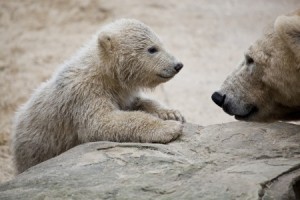
Earth’s Symphony of Life – why can’t humans be so gentle with one another?
I woke up this morning to a Symphony of Spring Life outside my door. A family of rabbits caught my eye as they carried pieces of straw and dry Pampas grass into a rabbit hole they just dug in my garden.
Cherry red cardinals were flying over the Cottontails, making their way to the suet cakes hanging next to a bird feeder dripping with crisp sunflower seeds that a fat and bushy squirrel was spilling overboard.
Then, a bird-sized yellow and black Swallowtail coasted between the squirrel and the Cardinal as the morning breeze carried it along with little effort.
Wow. What a diversity of life for North Texas. All I need to see now is a deer, but sprawling, human development north of Dallas ran those off years ago.
Bigger Than Life
Watching this small, yet magnified, exchange of “being” made me realize how well other animals get along with one another. With the exception of my domesticated wiener dogs and arrogant house cat (who are currently unaware), those Cottontails are safely shoving straw down their rabbit hole in my front yard – the squirrel hasn’t been arrested for stealing a few sunflower seeds – and, the Cardinals haven’t attacked the butterfly coasting close to the suet cake.
All these animals are going about their business and leaving one another alone.
So, why can’t we, humans, do the same thing?
The Ecosystem

Humans try to control the natural ecosystem for their own benefit.
If you study the Natural Sciences, you’ll discover that animals pretty much keep out of each other’s way, using a mere snarl or harmless pounce to set their boundaries. Killing is meant for food only, and as sad as that is, it helps regulate wild populations.
No other animal on our planet kills for the “convenience” of it other than the human.
We annihilated the American Indian so we could possess their lands; we organize coos to steal another’s resources; we start wars for oil.
Do we inoculate newborn babies for profit, and produce toxic foods for ultimate population control? No matter the reason, our actions are a product of arrogance, judgement, and greed.
I’m glad to be human, but this morning, I think I’d rather be a Cottontail.

